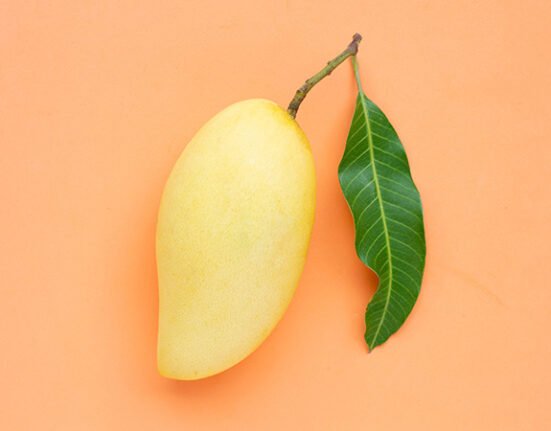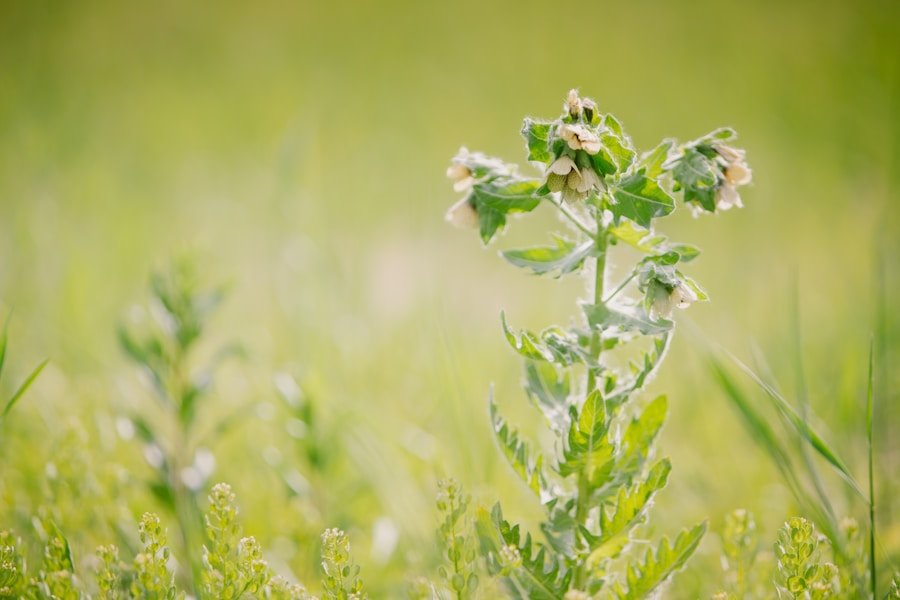Herbal plants, also referred to as medicinal plants, have been utilized for centuries due to their therapeutic properties. These plants contain a variety of compounds that have been found to possess medicinal benefits, and are frequently employed in traditional medicine systems such as Ayurveda, Traditional Chinese Medicine, and Indigenous healing practices. Herbal plants can be consumed in various forms, including teas, tinctures, extracts, and essential oils.
They are often used to treat a broad range of health conditions, from minor ailments such as colds and headaches to more serious conditions like diabetes and heart disease. In addition to their medicinal properties, herbal plants are also valued for their nutritional benefits, as many of them contain vitamins, minerals, and other nutrients that can support overall health and wellness. Furthermore, herbal plants are prized for their aromatic and flavor-enhancing qualities, making them popular ingredients in culinary preparations.
Overall, herbal plants are a diverse group of plants that have been utilized for their healing properties for centuries, and continue to play a vital role in natural medicine and wellness practices globally.
Key Takeaways
- Herbal plants are plants that are used for their medicinal, aromatic, or culinary properties.
- Understanding herbal plants involves learning about their uses, properties, and how to identify and use them.
- Herbal plants offer a wide range of health and wellness benefits, including treating various ailments and promoting overall well-being.
- Identifying and using herbal plants involves learning about their physical characteristics, growing conditions, and proper harvesting and preparation methods.
- Herbal plants have been used in traditional and modern medicine, and cultivating them at home can be a sustainable and rewarding practice.
Understanding Herbal Plants: An Introduction
Therapeutic Effects of Herbal Plants
Some herbal plants have anti-inflammatory, antimicrobial, or antioxidant properties, while others may have effects on the nervous system, digestive system, or cardiovascular system.
Essential Oils and Medicinal Benefits
Many herbal plants also contain essential oils that have been used for their aromatic and therapeutic properties. In addition to their medicinal benefits, herbal plants are also valued for their safety and low risk of side effects when used properly. Unlike many pharmaceutical drugs, herbal remedies are often considered to be gentler on the body and less likely to cause adverse reactions.
Safe Use of Herbal Remedies
However, it is important to note that herbal remedies should still be used with caution and under the guidance of a qualified healthcare professional, as they can still interact with medications and may not be suitable for everyone. Overall, herbal plants are a diverse and valuable resource for supporting health and wellness, and they continue to be an important part of natural medicine practices around the world.
The Benefits of Herbal Plants for Health and Wellness
Herbal plants offer a wide range of benefits for health and wellness. Many herbal plants have been found to have anti-inflammatory properties, which can help reduce pain and swelling in the body. Others have antimicrobial properties, which can help fight off infections and support the immune system.
Some herbal plants have adaptogenic properties, which can help the body adapt to stress and support overall resilience. Additionally, many herbal plants are rich in vitamins, minerals, and other nutrients that can support overall health and well-being. In addition to their physical benefits, herbal plants also offer mental and emotional benefits.
Many herbal plants have calming and relaxing properties that can help reduce stress and anxiety. Others have uplifting and energizing properties that can help improve mood and mental clarity. The aromatic properties of many herbal plants can also have a positive effect on mood and emotional well-being.
Overall, herbal plants offer a holistic approach to health and wellness, addressing both physical and mental aspects of well-being.
How to Identify and Use Herbal Plants
| Herbal Plant | Description | Benefits |
|---|---|---|
| Aloe Vera | A succulent plant with thick, fleshy leaves containing a gel-like substance | Used to soothe burns, moisturize skin, and promote healing |
| Peppermint | Aromatic herb with serrated leaves and a pleasant, minty scent | Relieves indigestion, freshens breath, and alleviates headaches |
| Lavender | Fragrant herb with purple flowers and a calming aroma | Promotes relaxation, reduces anxiety, and aids in sleep |
Identifying and using herbal plants requires knowledge and skill in botany, as well as an understanding of traditional medicine systems and herbalism. Many herbal plants have distinct characteristics that can help with identification, such as unique leaves, flowers, or growth habits. It is important to be able to accurately identify herbal plants in order to ensure their safety and effectiveness when used for medicinal purposes.
Additionally, it is important to understand how to properly prepare and use herbal plants in order to maximize their therapeutic benefits. There are various methods for using herbal plants, including making teas, tinctures, extracts, poultices, and salves. Each method of preparation can extract different compounds from the plant material, resulting in different therapeutic effects.
It is important to follow proper guidelines for preparing and using herbal remedies in order to ensure their safety and effectiveness. Additionally, it is important to be aware of potential interactions with medications and other herbs when using herbal remedies. Overall, identifying and using herbal plants requires knowledge, skill, and caution in order to ensure their safe and effective use.
Herbal Plants in Traditional and Modern Medicine
Herbal plants have been used in traditional medicine systems for thousands of years, and they continue to be an important part of natural medicine practices around the world. Traditional medicine systems such as Ayurveda, Traditional Chinese Medicine, and Indigenous healing practices all rely on herbal plants for their therapeutic properties. These systems have a deep understanding of the medicinal properties of various plants and how to use them effectively for different health conditions.
In modern medicine, herbal plants are also valued for their potential therapeutic benefits. Many pharmaceutical drugs are derived from compounds found in herbal plants, and research continues to explore the potential uses of herbal remedies for various health conditions. Additionally, many people turn to herbal remedies as a natural alternative to pharmaceutical drugs, seeking out the gentler and more holistic approach that herbal medicine offers.
Overall, herbal plants have a long history of use in traditional medicine systems and continue to be valued in modern medicine for their potential therapeutic benefits.
Cultivating and Growing Herbal Plants at Home
Benefits of Growing Herbal Plants at Home
Many people choose to cultivate and grow herbal plants at home to have a fresh supply of medicinal herbs on hand. This allows them to have access to fresh herbs for culinary use, as well as for making teas, tinctures, and other herbal remedies. Moreover, it enables people to connect with the natural world and gain a deeper understanding of the medicinal properties of various plants.
Considerations for Cultivating Herbal Plants
When cultivating herbal plants at home, it is essential to consider the specific growing requirements of each plant species. Some herbs prefer full sun, while others prefer partial shade. Similarly, some herbs thrive in well-drained soil, while others prefer moist soil. Providing the right growing conditions is crucial to ensure healthy plant growth and optimal medicinal properties.
Importance of Ethical Harvesting Practices
In addition to providing the right growing conditions, it is vital to consider ethical harvesting practices when growing herbal plants at home. This ensures sustainability and conservation of plant species, allowing future generations to benefit from these natural resources. By adopting responsible harvesting practices, individuals can enjoy the rewards of growing herbal plants at home while also preserving the environment.
Common Myths and Misconceptions about Herbal Plants
There are many myths and misconceptions surrounding herbal plants that can lead to confusion and misinformation about their uses and benefits. One common myth is that all herbal remedies are safe because they are natural. While it is true that many herbal remedies are generally safe when used properly, it is important to remember that they still contain bioactive compounds that can have potent effects on the body.
It is important to use caution when using herbal remedies and seek guidance from a qualified healthcare professional. Another common misconception is that all herbal remedies are effective for everyone. While some herbal remedies may work well for certain individuals, they may not be effective for others due to differences in body chemistry and health conditions.
It is important to understand that not all herbal remedies will work for everyone, and it may take some trial and error to find the right remedy for a particular health condition. Overall, it is important to approach herbal remedies with an open mind and a willingness to seek guidance from qualified professionals in order to ensure their safe and effective use.
The Importance of Sustainability and Ethical Harvesting of Herbal Plants
As the demand for herbal plants continues to grow, it is important to consider the sustainability of harvesting practices in order to ensure the conservation of plant species for future generations. Overharvesting of wild plant populations can lead to depletion of natural resources and loss of biodiversity. It is important to consider ethical harvesting practices when collecting wild herbs in order to ensure their long-term survival.
One way to promote sustainability is by cultivating herbal plants through responsible farming practices. By growing herbs in a sustainable manner, we can reduce the pressure on wild plant populations while still meeting the demand for medicinal herbs. Additionally, it is important to support ethical wildcrafting practices by only harvesting from abundant plant populations and leaving enough plants behind to ensure their continued growth.
Overall, sustainability and ethical harvesting practices are essential for ensuring the long-term availability of herbal plants for medicinal use. By promoting responsible cultivation and wildcrafting practices, we can help conserve plant species while still benefiting from their therapeutic properties. In conclusion, herbal plants are a diverse group of plants that have been used for centuries for their medicinal properties.
They offer a wide range of benefits for health and wellness, from physical healing properties to mental and emotional support. Understanding how to identify and use herbal plants requires knowledge and skill in botany as well as an understanding of traditional medicine systems. Herbal plants have a long history of use in traditional medicine systems as well as modern medicine practices.
Cultivating and growing herbal plants at home can provide access to fresh medicinal herbs while promoting sustainability through responsible farming practices. It is important to be aware of common myths and misconceptions about herbal plants in order to ensure their safe and effective use. Finally, promoting sustainability through ethical harvesting practices is essential for ensuring the long-term availability of herbal plants for medicinal use.
Overall, herbal plants continue to be an important part of natural medicine practices around the world, offering valuable resources for supporting health and wellness.
FAQs
What are herbal plants?
Herbal plants are plants that are used for their medicinal, aromatic, or culinary properties. They have been used for centuries in various cultures for their healing and therapeutic benefits.
What are some examples of herbal plants?
Some examples of herbal plants include lavender, chamomile, peppermint, Echinacea, ginger, and garlic. These plants are used for a variety of purposes, such as treating ailments, adding flavor to food, or creating fragrant oils and teas.
How are herbal plants used?
Herbal plants can be used in various forms, including as teas, tinctures, essential oils, capsules, and topical ointments. They can be ingested, applied to the skin, or inhaled to provide their therapeutic effects.
What are the benefits of using herbal plants?
Herbal plants are believed to have numerous health benefits, including reducing inflammation, boosting the immune system, improving digestion, and promoting relaxation. Many people also use herbal plants as natural alternatives to conventional medicine.
Are there any risks associated with using herbal plants?
While herbal plants can offer many benefits, it’s important to use them with caution. Some plants can interact with medications or cause allergic reactions. It’s always best to consult with a healthcare professional before using herbal plants, especially if you have any underlying health conditions.








2 Comments